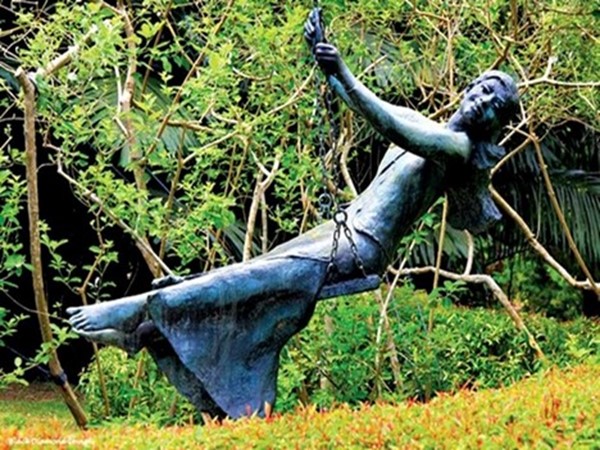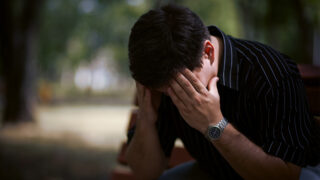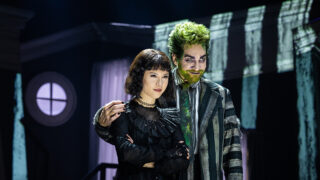Now long retired, Geraldene Lowe was a doyenne of local guides in Singapore for over 50 years. She showed countless groups around the island, touching on every aspect of its history, architecture and culture. We were lucky enough to accompany Geraldene on several of her fascinating tours – in this post, we share our notes from her exploration of the Jews in Singapore, Jewish history and influence in architecture (both grand homes and synagogues in Singapore) and culture.
History of Jews in Singapore
There were already a handful of Jewish Baghdadi traders in Singapore when Raffles first set foot here in 1819. In 1830, a census of traders recorded “nine merchants of the Jewish faith”. They made their fortunes at first from the opium trade, and later mainly in stocks and properties, tin, rubber and textiles.
Singapore’s Sephardic Jews were originally from Mesopotamia (modern-day Iraq); they are distinguished from the Ashkenazi Jews who arrived here more recently and have their origins in Europe. By 1939, there were more than 1,500 Jewish inhabitants; many were interned by the Japanese during the Occupation. After WWII, quite a number emigrated to Australia, Israel and other countries, leaving a reduced community of about 450. The current population ranges from 2,000 to 3,000, consisting of Ashkenazi, Sephardi, and Eurasian Jewish communities from various foreign backgrounds.
Jewish Influence in modern Singapore

The Botanic Gardens
There are plenty of places you could start a tour of the Jewish influence in Singapore, but the Botanic Gardens is as good as any. Three of the Gardens’ collection of sculptures – Girl on a Swing, Girl on a Bicycle and Lady on a Hammock – were commissioned from British sculptor Sydney Harpley and donated by the late David Marshall. Marshall was Singapore’s first Chief Minister, later Ambassador to France, Spain and Portugal, and one of the country’s most famous Jews.
Another gift to Singapore from another eminent Jew was the Jacob Ballas Children’s Garden. It was left as a bequest to the Botanic Gardens in the will of Jacob Ballas (1921- 2000). There’s a charming rule: you’re not allowed into the garden unless accompanied by a child.
Jacob was the son of poor Orthodox Iraqi Jews who moved here in the late 1920s and rented a terrace house at 19 Wilkie Road. His mother made ends meet by baking unleavened Arabic roti bread, which the young Jacob then sold in the neighbourhood. He’s also said to have sold noodles to his classmates for ten cents a bowl.
That early mental arithmetic paid off. After a full and chequered career that included selling cars and life insurance, and surviving the brutal Japanese Occupation – he became a stockbroker and eventually chairman of the Malaysia and Singapore Stock Exchange. A great philanthropist, he financed the building of the Jewish community centre next to Maghain Aboth Synagogue. The Centre was opened in 2007 and bears his name.
Travelling down Nassim Road, you’ll pass the British High Commissioner’s residence, Eden Hall. It was built in 1904 by Ezekiel Manesseh. At first, he rented it to a Scottish widow, Mrs Campbell, who managed it as a boarding house. But in 1916, after his marriage to English widow Elsie Trilby Bath, they moved in with her two children, Molly and Vivian.
The Goodwood Park Hotel was built in 1900 to be the Teutonia Club. After WWI, Ezekiel bought it and turned it into a boarding house; then during the WWII Japanese Occupation, it became the headquarters of the Kempeitai. After the war, he sold it to a Chinese banker who turned it into the hotel it is today.
The Jewish Quarter
Prinsep Street marks the start of the old Jewish quarter. The Prinseps were Englishmen of Jewish origin, and long-time financiers of the British East India Company. They entrusted the management of their 1,000-hectare nutmeg plantation here to the German Behn, Meyer & Co. outfit, while the family lived in the house on the hill. In 1876, when the Prinseps packed up to return to England, the government bought the property from them and started to build Government House. Now called the Istana, it’s the official residence of the President of Singapore.
Where Dhoby Ghaut MRT station is now, the first Jewish cemetery, The Orchard Road Cemetery, was established around 1840 on land acquired on a 99-year leasehold by the Jewish community.
Another cemetery for the Jewish community was established at the junction of Thomson and Newton roads. It was used from 1904 to 1973. When space was needed, the government paid for a rabbi to come from Israel to exhume the graves in both cemeteries, and gave the community a plot out at Jurong where most of the other cemeteries are.
Synagogues in Singapore

Crossing over the river into the banking district, you’ll arrive at Synagogue Street. Here the first synagogue in Singapore – in the form of a shophouse – was erected in the 1840s. It served its intended purpose for 30 years, before being sold as a residential shophouse and then demolished after the Japanese Occupation.
The handsome Maghain Aboth Synagogue in Waterloo Street, part of the colonial area, was consecrated in 1878. As Singapore’s chief synagogue, it holds daily services.
An honour roll of Jewish Welfare Board presidents is displayed at the entrance. At the top is DS Marshall, 1949-1952. At the foot is Victor Sassoon. Originally single- storeyed, an upper level was later added to accommodate the women of the congregation.
To the left of the main building is the seven-storey Jacob Ballas Community centre, mentioned earlier in this article. Most interesting is a display of passports, especially that of Jacob’s mother: SJ Ballas, undetermined nationality, registered on 5 May 1941, passport number “Nil”, occupation “housewife”, address 19 Wilkie Road.
Described as “the hub of Jewish life in Singapore”, the Centre houses the rabbi and his family, a mikvah (ritual bath) for women, and more. There’s a school here, too, where both boys and girls study on Sundays.
Swamps, hills and Jewish placenames in Singapore
You wouldn’t think so today, but Singapore used to be a hilly island. From Raffles’ time, however, most of its hills have been used to fill in swamps. An entire hill was bulldozed to fill in Raffles Place, for example. Fort Canning Hill (previously Bukit Larang, then Government Hill) remained largely intact, but it used to be loftier than it is now.
The original seven hills of Chinatown – or the “one and a half hills” that are now left – reflect Jewish influence. Pearl’s Hill, originally called Mount Stamford (after Stamford Raffles) was named for Lieutenant James Pearl, the English-Jewish owner and captain of the ship that first brought Raffles to Singapore in 1819. He bought over the Chinese-owned spice plantations that were already on it; but by 1824 he sold the hill back to the colonial government and retired on the proceeds.
Mount Wallich, named for Nathaniel Wallich (1786-1884) – and there is a street of the same name near Tanjong Pagar MRT station – was a Danish-Jewish surgeon who worked in the Danish settlement near Calcutta. A leading botanist of his time, he was also superintendent of the East India Company’s botanical garden there, and many years later – at the request of his old friend Raffles – he came to Singapore to design the first botanical gardens, around his house on Fort Canning Hill.
Palmer Road is named after John Palmer. Part of a family of Jewish Calcutta merchants, he has been called the father of the Indian mercantile community in Singapore. During the 1820s, he owned Mount Palmer, which was subsequently levelled.
Solomon Street in the Boat Quay area was named after Abraham Solomon, a large and imposing merchant from Baghdad who came to live here permanently in 1842.
Jewish history in Singapore’s east
Heading up the East Coast, on the corner of Meyer and Fort Roads, is what used to be the Ezekiel family house. Wealthy families have always preferred to live near the seaside, so as to catch the breezes. This has long been a popular area featuring big villas. Before the Merdeka Bridge was built in 1935, however, the best way to get from town to Katong was by ferry.
The Seaview condominium in Amber Road is the former site of the Sea View Hotel – at least, the second incarnation of that well-known establishment. The original Sea View Hotel was built in the early 1900s on nearby Meyer Road, right on the beach and with a retaining wall against which the waves used to lap. Its splendid ballroom had a round dance floor with a romantic domed roof. Owner Reuben Manasseh Meyer, who also owned the equally renowned Adelphi Hotel nearby, leased it first to Eleazar Johannes and later to the Armenian Sarkies brothers, of Raffles Hotel fame. The original hotel closed and was replaced with the New Sea View Hotel from 1969, on the Amber Road site. It ceased operations in 2003.
Beyond the expansive swimming pools of The Seaview condo still stands a lovely old house that used to be in the grounds of the Elias family house. It was the home of the family accountant, a lawyer called Joe Grimberg, who grew up in this house. Sympathetically restored, it’s now the clubhouse for the condominium.
Final word on the Jewish influence in Singapore
There are so many corners of Singapore where the influence of the Jewish community can be plainly seen. Their contributions to the island’s cultural, architectural and social fabric have been signficant. A visit to some of the landmarks highlighted above will provide a strong sense of this impact.
Sources:
Geraldene Lowe
Eze Nathan’s The History of Jews in Singapore 1830-1945
Wikipedia
infopedia.nl.sg
remembersingaporewordpress.com
singaporejews.com
Finally, if you’re new or newish to Singapore, read the digital edition of our latest City Guide!
Don't miss out on the latest events, news and
competitions by signing up to our newsletter!
By signing up, you'll receive our weekly newsletter and offers which you can update or unsubscribe to anytime.



